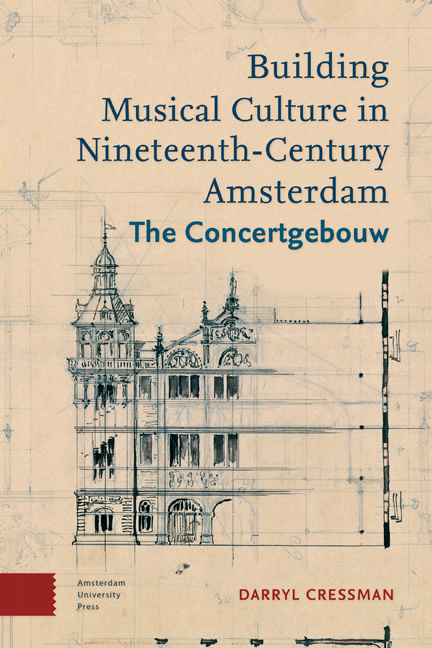Book contents
- Frontmatter
- Contents
- List of Illustrations
- Acknowledgements
- Dedication
- 1 The Concert Hall as a Medium of Musical Culture
- 2 Listening, Attentive Listening, and Musical Meaning
- 3 Patronage, Class, and Buildings for Music: Aristocratic Opera Houses and Bourgeois Concert Halls
- 4 Acoustic Architecture before Science : Designing the Sound of the Concertgebouw
- 5 Frisia Non Cantat: The Unmusicality of the Dutch
- 6 Listening to Media History
- Works Cited
- Index of Names
- Index of Subjects
5 - Frisia Non Cantat: The Unmusicality of the Dutch
Published online by Cambridge University Press: 10 December 2020
- Frontmatter
- Contents
- List of Illustrations
- Acknowledgements
- Dedication
- 1 The Concert Hall as a Medium of Musical Culture
- 2 Listening, Attentive Listening, and Musical Meaning
- 3 Patronage, Class, and Buildings for Music: Aristocratic Opera Houses and Bourgeois Concert Halls
- 4 Acoustic Architecture before Science : Designing the Sound of the Concertgebouw
- 5 Frisia Non Cantat: The Unmusicality of the Dutch
- 6 Listening to Media History
- Works Cited
- Index of Names
- Index of Subjects
Summary
What reason could there be for the fact that so few of our Dutch compatriots have a passion for music […] one is almost obliged to assume that it is entirely alien to our national character.
Introduction
Invoking both Sigmund Freud and Norbert Elias, Peter Gay writes that in response to the performance of a symphony, undivided silent attention is a triumph of the secondary over the primary process, ‘a civilized response that overrides instinctual urges’. From this perspective, the concert hall must seem odd to anyone unfamiliar with the rituals of classical music culture. To the uninitiated, these monuments to music are a material restraint against instinctual response, a temporary prison where we exhibit a bizarre type of self-discipline. As described in the introductory chapter, in the late eighteenth century and early nineteenth century, secular instrumental music became endowed with meanings that transformed it from pleasant entertainment into an art-religion. These meanings are legitimated and reproduced through attentive listening. These transformations concerning how music is to be listened to and what music means normalized the material-musical presuppositions of the concert hall and allowed audiences to forget that attentive listening runs counter to fundamental human impulses.
In the previous two chapters I examined how intermediaries, including Amsterdam's bourgeois cultural elite, architects, and musicians, took it upon themselves to organize, fund, and design the construction of the Concertgebouw. The purpose of this exercise was to better understand the origins of the Concertgebouw, examining how these intermediaries proposed a distinctly sociotechnical vision of Amsterdam's musical culture in which a concert hall would be the solution to what were considered musical problems. Following this, I examined the design of the Concertgebouw through a close attention to how ideas about musical meaning and attentive listening were translated into ideas about acoustic design. Yet, there is something missing in this history. The history of the Concertgebouw presented thus far does not explain why this particular building ‘made sense’ for Amsterdammers. For the Concertgebouw to ‘work’ as a musical medium, Amsterdammers had to identify with the ideas about listening and musical meaning that this building presupposed.
- Type
- Chapter
- Information
- Building Musical Culture in Nineteenth-Century AmsterdamThe Concertgebouw, pp. 105 - 140Publisher: Amsterdam University PressPrint publication year: 2016



